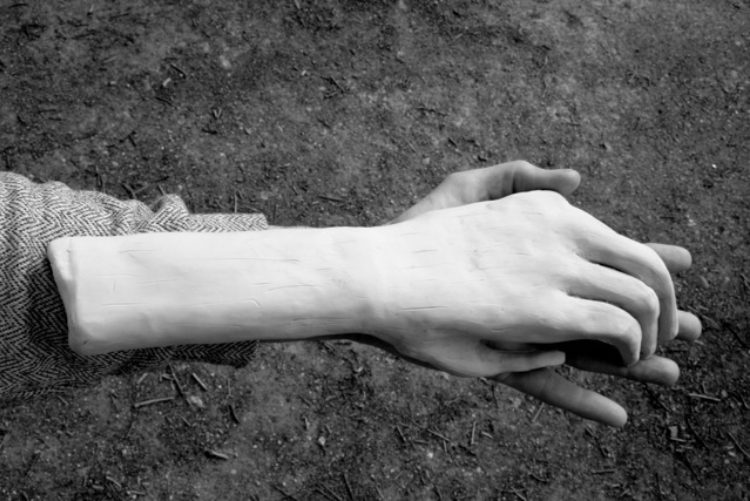
Research
Wondering whether it is possible to do a PhD in Visual Arts? Of course! Research plays a major role here.
In our PhD projects and research platforms, we do research in, for and with the arts. Every single day. At Sint Lucas Antwerpen, we have various research platforms and many ongoing and defended PhD projects. But there’s always room for more…
Research in the Arts
Sint Lucas Antwerpen has a heart for artistic research.
Lecturers and PhD students are involved in numerous projects, master classes, workshops, conferences, seminars and exhibitions based on research activities.
Artistic research in Sint Lucas Antwerpen is always conducted within an interdisciplinary and artistically relevant context.
There are five research platforms organising the different research projects, eight ongoing PhD projects and eight defended PhD projects. There is also our research periodical called TYPP and – unique in Flanders – an Advanced Master in Research in Art & Design in a social-political context.

Contact

Ruth Loos
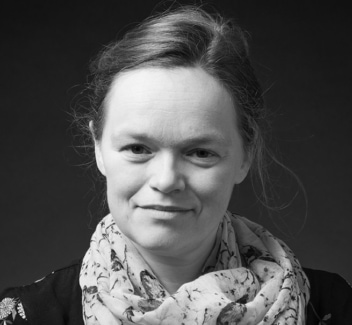
Petra Van Brabandt
Five research platforms
Several lecturers, artists, designers and researchers are active on these platforms.They develop their (artistic) knowledge within the context of specific research projects. Currently, there there are nine ongoing research projects.
Knowledge sharing is an important aspect of research at Sint Lucas Antwerpen. The artistic knowledge generated by our researchers is shared with peers, colleagues and the general public in the world of art and design through workshops, publications, seminars and masterclasses. Feel free to contact us for social services and expertise.
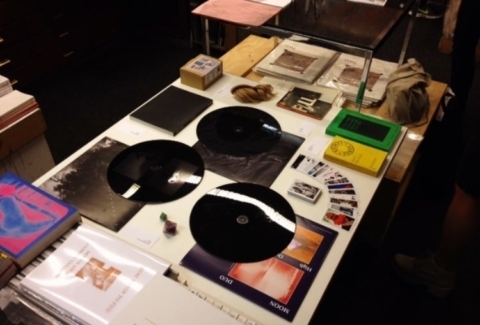
#1 The Hybrid Designer
The Hybrid Designer explores current, hybrid practices within the field of graphic design. Based on The Hybrid Artist, coined by Pascal Gielen, a graphic practice is located between autonomous and applied art forms, between commercial and social practices. The boundaries of the research practices of the graphic designer have become fluid.
Read more.

#2 EMRG
EMRG specialises in human-computer interaction, computer graphics applications and cutting-edge research in the domain of user experience and creativity, but also in artificial intelligence and natural language processing. A key theme is the role of computers in (visual) communication.
Read more.

#3 Interpraxis
Interpraxis brings together different projects that place artistic practice at the intersection of many other practices: aesthetic, social, political, art theoretical, etc. Interpraxis searches for connections between a discursive and a visual praxis.
Read more.
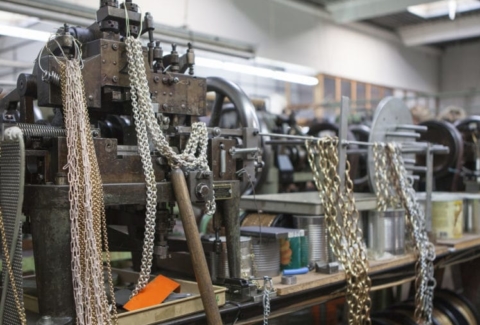
#4 Precious Dialogue
Precious Dialogue combines research and projects carried out by designers and artists who take jewellery or the object as a starting point for their artistic research. The platform also offers room for projects based on the multifaceted aspects of jewellery such as physicality, material, presentation, ornamentation and symbolism.
Read more.
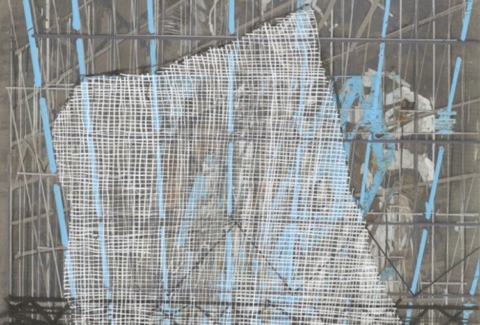
#5 Horizontal Drawing
Horizontal Drawing studies drawing as a horizontal, symbolic medium. It examines how meaning forms in and through drawing, literally a play with signs and symbols. In this respect, drawing is considered a symbolic system that generates meaning.
Read more.
Doctoral students in Arts
A PhD in the arts involves in-depth artistic research that takes four years to complete, on average. Our PhD students are connected to the research platforms and provide input and direction for artistic education at Sint Lucas Antwerpen through masterclasses and seminars.
Eight artists and designers have successfully completed their doctoral projects. Karen Vermeren, PhD, Steve Van den Bosch, PhD, Frederik De Bleser, PhD, Wesley Meuris, PhD and Tom De Smedt, PhD are still associated with Sint Lucas Antwerpen through educational activities or post-doctoral research.
Current PhD projects

IRMA FÖLDÉNYI
(2024-…)
Voices of Materials: Probing the Cultural Ecology of Material Finitude
How can jewellery act as a performative medium that tells stories about material finitude on a planetary and local scale? This question came forth from my design practice, which concerns with the sourcing and valuing of materials, and my role as a jeweller within contemporary environmental discourses.
Just as the ‘Blue Marble’ image shed new view on Earth, can jewellery, with its small scale in this world, be able to create new, caring ways of relating to planetary processes or hyperobjects we are part of, yet which remain, in their complexity, hard to grasp.
The subject of this research is material finitude, the planetary limitation of materials. From an eco-critical approach, I propose an inquiry that goes beyond the human time scale to materiality.
With the methodology of probing I aim to learn what materials have witnessed and how they have transformed within their economic and environmental- cultural contexts. The voices that emerge are brought to public conversation in the tactile and visual language of jewellery.
Actively listening to three materials – sand, coal and water – forms the basis for three case studies, and a range of outcomes that contributes to wider discourse on the entanglement of humans, materials and ecosystems.

GARINE GOKCEYAN (2024-…)
Exploring the Diasporic Life of Armenian Script: a multiscript design laboratory
This multiscript research project addresses the inequities between scripts taking the Armenian writing system as a living proof and a laboratory script. Through an intersectional feminist and decolonial lens, the project seeks to create a series of multilingual and multiform resources that will change the under-resourced and disadvantaged status of Armenian script and will integrate it into the contemporary design realm. A much-needed space for dialogue and critical discourse around under-resourced languages could be created. (Fig.: Roman Capital Letter “I” according to the Human Body and Face, from Geoffroy Tory’s, Le Champ fleury, 1529. Paris. Source: © Bibliotheque national de France).

SHAYMA NADER
(2022-…)
Against Forgetting: Exploring poetic gestures of return(ing) to the land in Palestine
This research project intends to examine the erasures caused by settler-colonialism and the subsequent practices of resistance to that erasure, by exploring ways of relating to and cultivating the land through generative acts of resistance rooted in issues of seeds, soil, and popular pedagogies. The main objective is to interlace the reactivation of collective memories with multiple forms of storytelling and critical remembrance drawing from notions of the undercommons and fugitivity, collaborative grassroots filmmaking and critical fabulation, to inform poetics gestures and conversations envisioning land-centered and post-colonial imaginaries.

VIET VU (PHAM QUANG TRUNG) (2022-…)
Queering the censorship: A (self-)investigation through the first-person perspective of an experimental filmmaker in Vietnam
Seen from the first-person perspective as a queer experimental filmmaker, this project asks the question of how the community of Vietnamese radical audio-visual artists have been encountering and transcending different legislative and latent types of censorships imposed by the Vietnamese society, Vietnamese government, and the artists themselves.
Supervisor Sint Lucas Antwerpen:
dr. Wesley Meuris
Supervisor UA:
prof. dr. Kyoko Iwaki
More info:
studio-if.nl
Supervisor Sint Lucas Antwerpen:
dr. Ruth Loos & PhD researcher Loraine Furter
Supervisor UA:
prof. dr. Kathleen Gyssels More info: www.garinegokceyan.com
Supervisor Sint Lucas Antwerpen:
dr. Joachim Ben Yakoub
Supervisor UA :
prof. dr. Gert Van Hecke & dr. Matthias De Groof
Supervisor Sint Lucas Antwerpen:
dr. Sofie Verdoodt
Supervisor UA: prof. dr. Philippe Meers More info: www.vietvuphm.wordpress.com
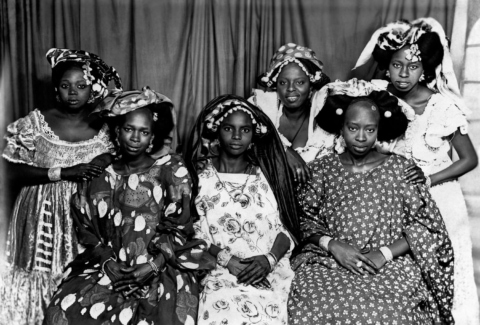
PIERRE-ANTOINE VETTORELLO
(2021-…)
Black Yarns
This research project aims to reveal a decolonial critique of fashion museology by sharing
genealogies of black women designers between 1939 and 1966. In it, Pierre-Antoine Vettorello reflects on the absence of black women designers in contemporary fashion history in France and Europe coming from my French/Ivorian designer-researcher background. He wants to restore missing narratives by re-editing archival garments and jewelry, potentially reattributing designs to their owners by publishing a research book of portraits and photographs including restored pieces. Creating archives, crafting garments issued from collective fashion memory will help fill the blanks using speculation and fiction based on black women who played a role in fashion between France and Senegal.
Image by Mama Casset, courtesy of Revue Noire.
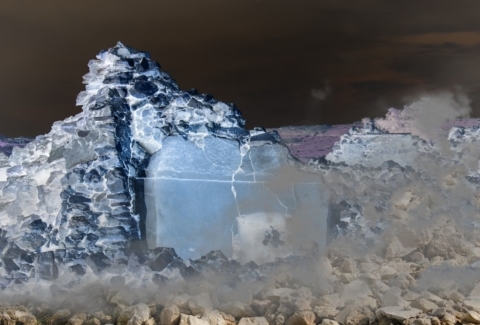
MONA HEDAYATI
(2021-…)
Reverb-Resonate: Sounding the Affective Frequencies of Migration
The project endeavors to create embodied conditions for communicating the ineffable psychophysiological complexity of lived experiences of migration to depart from reducing these experiences into verbal or visual narratives that cannot withhold their ineffability. The project’s aim is, thus, to capture, collect, and transform somatic markers—to stand in for psychophysiological changes—into sound as an affective medium to build sensory-performative experiences. As an interdisciplinary project embedded in the space of art-science-technology, the secondary aim is to denaturalize the legacy of scientific objectivity predicated on quantifying and datafying varied phenomena, including somatic markers. As such the project juxtaposes the logic of quantification and datafication against the materiality of the body by initially subscribing to and eventually departing from normative technological processes. The project, hence, reconfigures affective data into speculative acoustic spaces through the body that is already mediated by the technoscientific infrastructure.
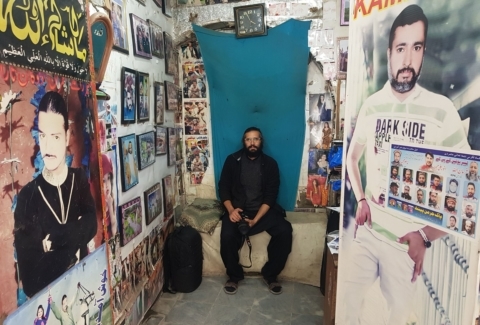
DANIAL SHAH (2021-…)
Visions of becoming and belonging: an (autobiographical) exploration of photo studios in Balochistan, Pakistan.
Focusing on the world of photo studios in contemporary Balochistan (Pakistan), the present project enters the terrain of the vanishing. With the arrival of digital technology photo studios are disappearing and along with them also their hand painted backdrops, props, costumes and cameras, the long sessions, the chatting and the manuality that make up the social life of these environments. What is not disappearing, however, is the desire to transform life by means of photographs where individuals are allowed to enter a fantasy world. Photographic studios in Balochistan are spaces where dreams are born and lives are shaped. In a studio you can become anything, a freedom fighter, a friend of the prime minister, the boyfriend of a movie star . Photographs are not mere representations, they are tools for performing life, for becoming. The disappearance of the studios also carries a deeper social meaning. Photographic aesthetics are in fact key terrain around which local communities gather. They bring individual fantasies in touch with a sense of belonging to the local community. So what will happen once they disappear? The project builds on my practice as a photographer and documentary filmmaker as well on my own biography as a displaced artist from Quetta, Balochistan, lending my own story and my own self to become the object of the work of local photographers. My exploration of the world of vanishing photographic studios will allow me to further explore the meaning of photographs in a South Asian context. Doing this I will also address matters of race, ethnicity and gender as they meet and merge in the context of the studios.

HODA SIAHTIRI (2020-…)
Singing the Silences
The songs of nomadic women of Bakhtiari, freely express the emotions and opinions of their female creators concerning different aspects of their daily lives. Through this research, I float in the fluidity of the songs of Bakhtiari inhabitants of Zagros mountains in west of Iran.
By mediating the processes of embodiment and transformation of the possibilities and the qualities of resistance in the repertoire of Bakhtiari songs against the ordeals of patriarchal social system, I propose to experiment with forms of embodied sonicity of resistance in performative audiovisual forms.
Engaging in this work, not only allows me to incorporate my own personal ancestral relations in Iran through the practice of singing, but also allows me to reconsider my situation as a displaced body in the heart of Europe, in Brussels. What bridges both is an embodied practice of survival in a society in which dominant voices mute and silence fragile narratives and ways of being, sensing and feeling. Together they push my research into poetic approaches of resilience to speak, narrate, voice and sing the silences I inherited.
Supervisor Sint Lucas Antwerpen:
dr. Kim Gorus
Supervisor UA:
Prof. dr. Kathleen Gyssels
Prof. dr. Diana Arbaiza
More info:
pierreantoine.vettorello@kdg.be
Supervisor Sint Lucas Antwerpen:
dr. Frederik De Bleser
Supervisor UA:
Prof. dr. Roschanack Shaery-Yazdi
Supervisor Sint Lucas Antwerpen:
dr. Ruth Loos
Supervisor UA :
Prof. dr. Paolo Favero
More info:
www.danialshah.com
www.instagram.com/danialshah_
Supervisor Sint Lucas Antwerpen:
dr. Joachim Ben Yakoub
Supervisor UA :
Prof. dr. Paolo Favero
More info:
Hoda.siahtiri@kdg.be

BIANCA BALDI
(2020-…)
Play-White: Racial Passing and Embodied Images
This research introduces a critical approach to “racial passing” and its complicity with image production. Someone who can pass for white is socially designated as one racial construct but performatively plays out whiteness. Passing complicates our current understanding of visual production and categories of identity.
Through my image-making practice, I reflect upon a visual history of racial passing in the South African context. By looking at the United States context I will establish synergies with the South African one to broach the absence of formal discourse. Through a reading of popular culture and literature, I clarify a contemporary position on the visual production of passing.
Play-White is a meditation on passing, embodiment, self-presentation, and the aesthetic thresholds of identity.
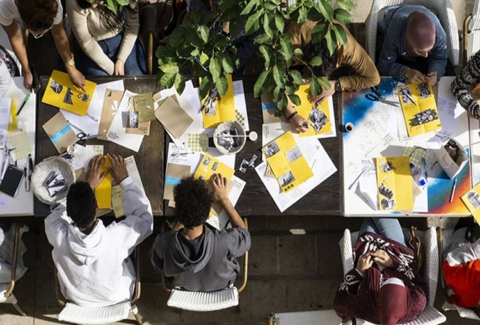
ANNELYS DEVET (2019-…)
The PhD research project “Disarming Design from Palestine” questions how design can be a vehicle for empowerment and solidarity in conflicted realities. How can one through the practice of design develop sustainable positions in fractured societies? Building upon relations of trust and long-term involvements in Palestine, Annelys de Vet will analyse, define and design the conditions for design to have a social, political and eman-cipatory impact. A concrete goal is to develop, in close collaboration with local partners, new forms and platforms for design education, collaboration and exchange in Palestine, reinforcing the economic, political and artistic sustainability of designers.
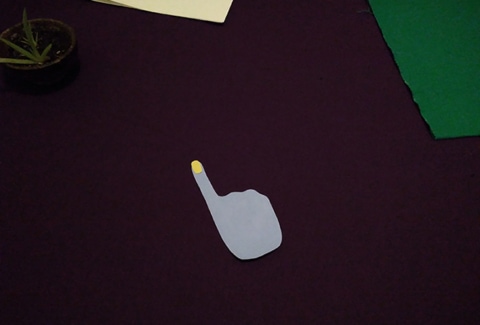
LORAINE FURTER (2019-…)
The research project The politics of publishing: researching encounters between artists’ books and intersectional feminist tools addresses artists’ books and the politics of publishing, creating forms to uncover forgotten histories in this field, through a critical design approach which includes feminist tools. The project will materialize in a series of hybrid publications (paper, digital, spatial, oral) that re·activate objects and histories and re·circulate them.

SAMMY BALOJI (2019-…)
Contemporary Kasala and Lukasa: towards a Reconfiguration of Identity and Geopolitics. This project aims to create new memory devices, based upon two existing devices used by different Luba groups living in the DRC:
– kasala is a ceremonial poem, sung or recited by Luba in the provinces Kasai Occidental and Kasai Oriental and Sankara, that serves as a public and solemn way to pay homage to and laud the actions and accomplishments of kings, chiefs, lineage heads and other types of public figures;
–lukasa is a memory board used and ‘read’ in a ritual performance by Mbudye, an association of men, responsible for the transmission of historical knowledge at the court of Luba kings, situated in the former province of Katanga.
These two different Luba groups were divided during the colonial era by boundaries between the former provinces of Kasai and Katanga. Descendants of Luba groups from Kasai who live in Katanga are now often considered ‘foreigners’ by those who claim to be the ‘original’ inhabitants of Katanga. The art works to be created are meant to bring these groups back together through a narrative that is part personal, part historical, par fictitious.
Supervisor Sint Lucas Antwerpen:
dr. Petra Van Brabandt
Supervisor UA:
Prof. dr. Diana Arbaiza
More info:
Bianca.baldi@kdg.be
Supervisor Sint Lucas Antwerpen:
dr. Petra Van Brabandt
Supervisor UA :
Prof. dr. Pascal Gielen
More info:
annelys.devet@kdg.be
Supervisor Sint Lucas Antwerpen:
dr. Kim Gorus
Supervisor UA:
Prof. dr. Diana Arbaiza
More info:
loraine.furter@kdg.be
Supervisor Sint Lucas Antwerpen :
dr. Bambi Ceuppens & dr. Ruth Loos
Supervisor UA:
Prof. dr. Paolo Favero
More info:
sammy.kabambibaloji@kdg.be

ROBIN VANBESIEN (2018-…)
Toward a Poetics of Close-To-Each-Other The PhD research project Ciné Place-Making explores how to work out the relationship between a moving image practice and the collective imaginaries of “place-making” by various grassroots practices, networks, and movements. Through a series of film works, multiple figures of “co-elaboration” (tools, methods, principles, and approaches) are developed and created for a screen-based (re-)assembly of various forms of place-making, with the purpose of preserving and elaborating these as unbound resources for more-than-social struggles.
Supervisor Sint Lucas Antwerpen:
dr. Wesley Meuris
Supervisor UA:
Prof. dr. Pascal Gielen
More info:
robin.vanbesien@kdg.be
Defended Phd projects
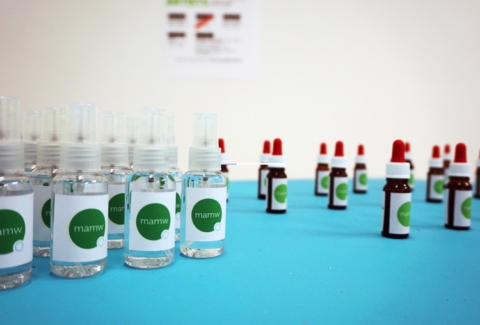
dr. SARAH HENDRICKX (2016-2022)
The (bureau)creative Climate focuses on the Research Centre on Creative Abilities meandmywork, a center of knowledge on bureaucreativity. In order to survive within our future working environment creativity was put forward as only weapon, making the aim – to increase the personal level of creativity – profoundly popular for misuse by a capitalist system. mamw became a metaphor for a world where creativity is a pill one can simply take to become successful. The research learns from existing bureaucreative structures and visualizes its methodologies within the fictional Research Centre.
Supervisor Sint Lucas Antwerpen:
dr.Wesley Meuris
Supervisor UA:
Prof. dr. Pascal Gielen
More info:
sarah.hendrickx@kdg.be
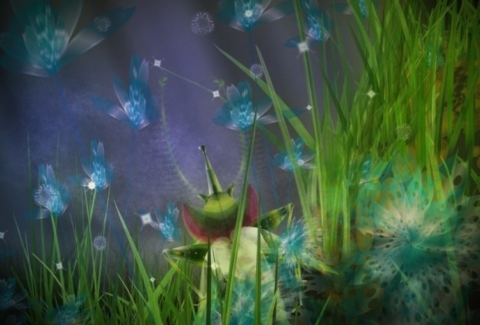
dr. LUDIVINE LECHAT (2015-2020)
Interactive fairy tales examine the relationship between new media art and healthcare, for combating stress and loneliness among hospitalised children.
Supervisor Sint Lucas Antwerpen:
dr. Tom de Smedt
Supervisor UA:
Prof. dr. Koen Norga
Supervisor UA/VUB:
Prof. dr. Monica Dhar
More info:
ludivine.lechat@gmail.com

dr. ALI BAHARLOU (2015-2020)
Parallel narratives, different elements and forms of representations and their effect on audience perception
researches parallel narratives in film and how choice can lead to different destinies for the protagonist. The questions raised are how audience perceive these topics in parallel narratives and how filmmakers can change or manipulate the perception of choices, multiple paths and free will by diverse narrative elements, devices and different forms of representations.
Supervisor Sint Lucas Antwerpen:
dr. Tom de Smedt
Supervisor UA:
Prof. dr. Philippe Meers
More info:
alibaharlou@gmail.com

dr. KAREN VERMEREN (2012-2018)
Fault Lines (Breuklijnen): the search for new artistic representations of the geological landscape calls into question traditional views of landscape paintings. This project searches for new representations of the geological landscape in two-dimensional in situ installations. It focuses in particular on the movement of fault lines and glaciers. The research was conducted in collaboration with various researchers at the University of Antwerp (Prof. Ivan Nijs, PhD, Plant and Vegetation Ecology Research Group and Prof. Emeritus Louis Beyens, PhD, Ecosystem Management Research Group) and Sint Lucas Antwerpen (Horizontal Drawing, led by Arpaïs Du Bois).
Supervisor Sint Lucas Antwerpen:
dr. Sofie Verdoodt
Supervisor UA:
Prof. dr. Ivan Nijs
More info:
Karen.Vermeren@kdg.be

dr. BOY VEREECKEN (2012-2019)
Signature Strengths revolves around risk mitigation and the desire for certainty, and how this can be related to design strategies & methodologies. The research will be demonstrated through the writing of a novel, consisting of feature writing formats. In this way, it wants to question what it means to be ‘complete’ within the production of a particular product and what the relevance is of the features accompanying that very result.
Supervisor Sint Lucas Antwerpen:
Michel Van Beirendonck
Supervisor UA:
Prof. dr. Luc Pauwels
More info:
mail@boyvereecken.info
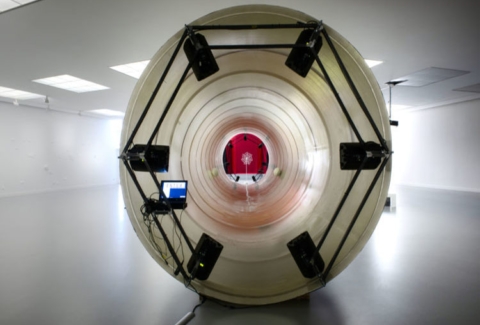
dr. HASEEB AHMED (2014-2018)
The Wind Egg reaches back over 3000 years to ancient Egyptian, Greek, Indian, Chinese, and Arabic cultures. Held as fact until the 17th century it postulates that animals and people can reproduce with the wind as plants do. Vultures in particular were thought to be exclusively female and reproduce solely with the Western wind. Taking them as the starting point and using modern wind tunnel Ahmed researched the possibility of human reproduction with the wind and without men, freeing both from nature with technology. In collaboration with Zurich University of the Arts and Von Karman Institute for Fluid Dynamics.
Supervisor Sint Lucas Antwerpen:
Werner Van dermeersch
Supervisor UA:
Prof. dr. Staf Van Tendeloo
More info:
hwahmed@gmail.com
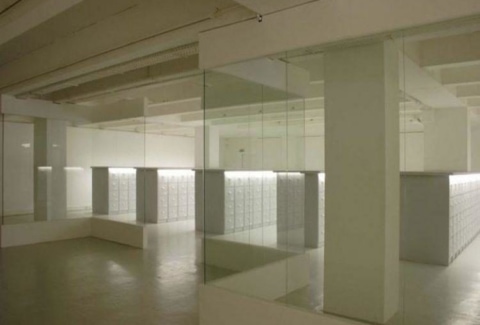
dr. WESLEY MEURIS (2010-2017)
Exhibiting Knowledge researches the correlation between knowledge (knowing) and art. How should an artistic work deal with this? Can science become a medium? How is knowledge/art conserved? How is art consumed, how does the artistic image deal with this? How does architecture (space) regard itself as a conductor in value judgments of knowledge? Does science allow itself to be deconstructed by an artistic image?
Supervisor Sint Lucas Antwerpen:
Werner Van Dermeersch
Supervisor UA:
Prof. dr. Herwig Leirs
More info :
wesley.meuris@kdg.be

dr. FREDERIK DE BLESER (2011-2016)
This research project studies the impact of generative software on graphic design and art and how such an approach differs from traditional digital tools such as Adobe Photoshop. Based on the research, we can understand the scope of generative design tools and help determine the future for the digital tools used by designers every day.
Supervisor Sint Lucas Antwerpen:
Lucas Nijs
Supervisor UA:
Prof. dr. Serge Demeyer
More info:
frederik.debleser@kdg.be

dr. STEVE VAN DEN BOSCH (2010-2016)
Artwork as a productive vanishing point examines how the conflict between the textual and the zero point of the artwork can function productively. This question has been examined from the perspective of art history and philosophy in order to develop new parameters within contemporary artistic practice.
Supervisor Sint Lucas Antwerpen:
Mark Luyten
Supervisor UA:
Prof. dr. Arthur Cools
More info:
Steve.vandenbosh@kdg.be

dr. TOM DE SMEDT (2008-2012)
Modeling Creativity: Case Studies in Python focuses on computer models of creativity, with the help of artificial intelligence techniques. Based on the doctoral thesis, we can conclude that conscious self-reflection still distinguishes people from machines in the area of creativity. This research project has also led to the development of two open-source programmes for the Python programming language: NOGL, a development platform for simple computer games and Pattern, a user-friendly programming package for natural language processing. The research was funded by the UA Industrial Research Fund (IOF).
Supervisor Sint Lucas Antwerpen:
Lucas Nijs
Supervisor UA:
Prof. dr. Walter Daelemans
More info:
tom.desmedt@kdg.be

dr. DIRK VAN DER EECKEN (2005-2008)
The art of the invisible: drawings and the significance of nanostructures was completed with the support of a UA University Research Fund (BOF) research project for art research. The aim of this PhD thesis is to demonstrate that art and science are complementary and that the fascinating world of atoms can enthral both the scientist and the artist.
Supervisor Sint Lucas Antwerpen:
Werner Van dermeersch
Supervisor UA:
Prof. dr. Staf Van Tendeloo
More info:
ruth.loos@kdg.be
Would you like to do a PhD at Sint Lucas Antwerpen?
Sint Lucas Antwerpen annually finances at least one doctoral fellowship in Art. Those who meet the requirements below may compete for a doctoral fellowship through the annual open call.
> Application form PhD Fellowship (word)
> Application form PhD Fellowship (pdf)

Requirements
Firstly, you must have a mature artistic or design practice and a strong research proposal. A master’s degree in visual arts or in another relevant field is a requirement. In addition, your doctoral proposal must be supported by a promoter (PhD) at Sint Lucas Antwerpen and a promoter (ZAP) at the University of Antwerp.
Open Call for Doctoral Fellowships (50%)
Doctoral proposals may be submitted via ruth.loos@kdg.be. An external jury makes a first ranking of the submitted proposals and positively ranked candidates will be invited for interview. The jury will communicate it’s final ranking to the ARIA Research Board. Following a positive recommendation by the ARIA Research Board, the ARIA Steering Group gives the final approval for the granting of the doctoral fellowship. The PhD student can then enrol for the doctoral programme at the University of Antwerp. An individual PhD committee is set up at the start to assist the doctoral student in their trajectory.
Doctoral programme
The Antwerp Doctoral School helps PhD students to successfully complete their doctoral studies. For this, the Antwerp Doctoral School organises a compulsory doctoral programme that can be individually tailored. The doctoral student can choose from an extensive range of courses as well as include research-related activities in the programme. Doctoral students can also claim a programme credit for attending courses and conferences. All research and programme activities are reported annually to the Antwerp Doctoral School in the form of a progress report.
Antwerp Research Institute for the Arts (ARIA)
Within the University of Antwerp, the Antwerp Research Institute for the Arts (ARIA) is the point of contact with the Schools of Art and helps give shape to the artistic research. ARIA is specifically authorised to grant doctoral degrees in Art. In addition, ARIA maintains the relationship between the University, Schools of Arts and the artistic world. In collaboration with the three Schools of Art in Antwerp, ARIA also organises a joint range of research seminars where researchers, PhD students and other interested parties are welcome.
Contact & info:
Ruth Loos, PhD in Art – Research Coordinator
View the programme and other research activities on the ARIA website.
Head of ARIA: Prof. Pascal Gielen, PhD
Advanced Master of Research in Art & Design
Our advanced master program focuses on research development of artists and designers whose practice is anchored in a social-political context (including but not limited to feminism, social design, migration, decolonialism, class politics, queer politics, disability politics, capitalism, identity, Anthropocene, the (under)commons, community art, conflict&design, healing&rituals, history, big data…). The program offers time and space to do research without the requirement of any particular final format such as an exhibition or production.
The focus is on artistic research and research exchange. The program is aligned to each participant’s work rhythm and caters for specific theoretical interests by inviting a diversity of voices from a variety of fields that can cater to the individual and collective research interests. Collective learning and participatory coaching are central to the program; it comes with the engagement of each participant to care for each other’s wellbeing and research development. We offer a coaching and participation methodology that is anchored in intersectional situatedness and care.
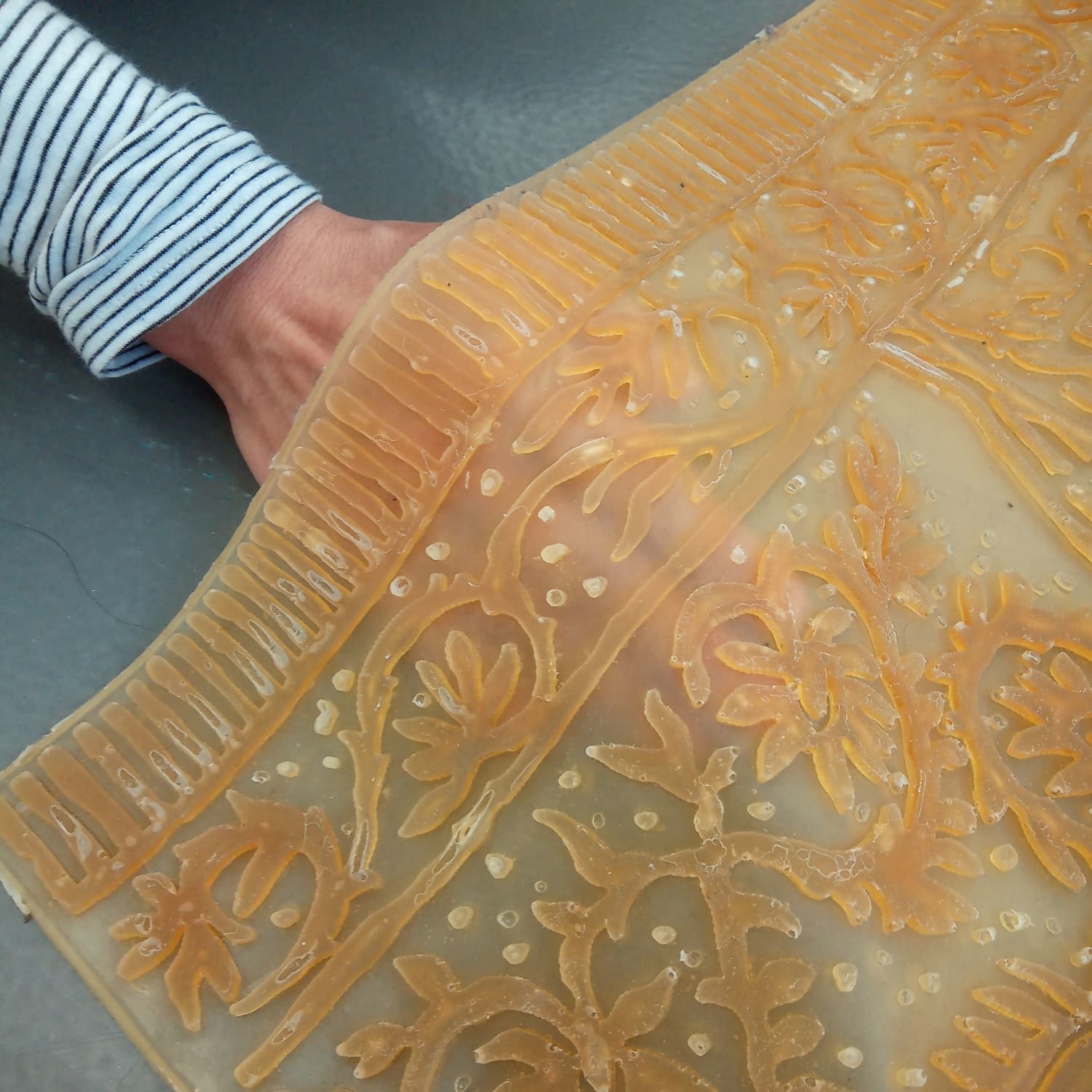
TYPP Research Publication
TYPP, developed out of a growing need and desire to make the multifaceted research culture of Sint Lucas School of Arts Antwerpen accessible to a wide audience, both within the school community and beyond. The notion of ‘research culture’ can be interpreted quite loosely. It involves research or PhD projects financed by Sint Lucas Antwerpen as well as individual research practices or research conducted by students in the context of their final Bachelor’s or Master’s project.
TYPP wishes to bring these practices together, without any hierarchy or a predefined format. It seeks to offer a forum for the field of artistic research, which is averse to categories and continuously reinvents and reorients itself. The editorial board is responsible for the composition of each periodical.

Editorial board:
Saskia Van der Gucht, Zeynep Kubat, Caroline Dumalin, Mekhitar Garabedian, Ward Heirwegh
Chief editor:
Zeynep Kubat
Graphic Design:
Ward Heirwegh
YPublisher:
Karel de Grote University College / Sint Lucas School of Arts Antwerpen
Info & contact:
typp@kdg.be
